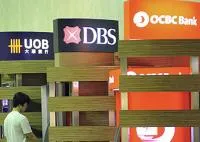
ATM makers hope to squeeze cash out of system
New software even plans out more efficient truck delivery routes.
As ATMs become more than just cash dispensers, vendors are constantly developing their ATM channels in order to cater to the customer’s ever changing needs.
In recent years, one of the most pressing concerns for ATM vendors is to minimize operation costs and maximize ATM revenue.
Ricardos Khoury, Wincor Nixdorf’s Regional Vice President and Head of Banking Division in Asia Pacific, says that the most drastic measure to lower ATM operation costs is proper cash management. He adds that majority of an ATM’s Total Cost of Ownership (TCO) over its lifecycle is the cost of cash, which by itself can be classified in different areas: the cost of owning the cash, the insurance cost and the replenishment cost incurred through service providers like CIT companies or even own dedicated staff.
“Cash management software will minimize the cash stock inside of ATMs, main vaults and cash centers as well as related insurance costs. It will also optimize the truck routes and reduce the number of CIT trips required to replenish ATMs and keep them in operation. Another measure to reduce cost of ATM operation is proper monitoring, fault prevention and incident management software. Such intelligent software like Wincor Nixdorf ProView will monitor the availability of ATMs, predict some faults before occurring and automate the entire process of resolving problems from incident reporting to final closure of resumption of service. By automating the entire process the bank requires less staff to manage the fleet while achieving a much higher efficiency. Impact on cost is immediately visible,” Khoury explained.
Khoury adds that proper monitoring and proper cash management have a direct impact on maximizing revenue. “Available ATMs with sufficient cash generate more transactions, more customer satisfaction and more revenue. However that’s only part of the story. The other part is more business related and going into the direction of providing added value transactions on the ATMs, transactions that customers are willing to pay a small convenience fee to execute on ATMs. Transactions such as bill payments, phone top ups, cash convenience remittances initiated through a third party (via mobile of internet) are examples of what customers are willing to pay for which will generate revenue to the bank and improve the TCO of owning and operating an ATM network.”
Another way of maximizing revenue is through third party advertisement on ATMs, which uses the idle times on ATMs to flash short campaigns and cross selling initiatives, noted Wincor Nixdor’f Ricardos Khoury, Regional Vice President and Head of Banking Division in Asia Pacific“However the golden rule here is not to extend the transaction times in a channel plagued by long queues and waiting times. Therefore, a professional software tool like PC/E Direct Marketing is required to manage and deploy the content of the different campaigns across highly distributed networks.”
According to Peter Poon, Executive Director of ATMIA in Asia, an open tender bid to get the best buy is the most cost-efficient way for banks to own and run their ATM fleet (in-house management). He adds outsourcing as another option to take advantage of the cost savings benefit of ATM Managed Service (End-2-End ATM service).
Ben Thorpe, Talaris’ Managing Director in Asia Pacific, offers a different perspective, saying that Asia Pacific markets are at very varying stages of maturity and whilst the ATM is a generic tool, how they are used can vary from country to country.
In China, the use of cash recycling is far more widely spread than in almost any other country. “This is presumably been adopted in an effort to reduce future operating costs as the ATM fleet expands rapidly and cash recycling becomes either permitted or more accepted by customers,” Thorpe noted.
In some cases, fees for ATM transactions have become more acceptable, but the idea of free banking remains the norm elsewhere. “Generally, banks are trying to move higher cost transactions to self-service channels – from the teller counter for example to a self-service device. But many are also are aware that the ATM is not as personal as banker and does not really provide the same opportunities for cross and up selling or lead generation,” Thorpe said.
Thorpe adds that as ATMs become more than just cash dispensers, this will also have an impact on operations – more niche areas of self-service are also joining the ATM: coin deposit, bulk cash & other media deposit, all to allow some transactions to move away from the teller line.
ATM vendors are also constantly working on improving the customer experience across different service touch points.
Khoury cites personalization and understanding of customer needs and requirements as the most effective means of improving the customer experience. “Customers will be impressed and will appreciate the customer service if the bank gets straight to the point, addressing their needs in the simplest way possible. For that to work, the bank needs to have proper customer profiling processes and tools which will capture the customer data and transform it into a form of intelligence that can be deployed cross channels.”
These projects are usually long term and are more of a business transformation journeys than a single IT implementation, says Khoury. “Many of our customers who deployed our MultiChannel Integration Platform called “PC/E Retail Banking Solutions Suite” are in the middle of such a journey and started to reap the benefits across the most strategic channels like Self-Service, Branch and Internet. Basically, the customer has one profile and one journal across all the channels, and the channels all look the same: simple to browse, familiar and useful functions, consistent menus and recognizable color schemes. One of the key functionalities our customers appreciate is the ability to personalize the ATM menu to suit individual preferences. Customers can choose on the ATM itself or on Internet Banking how their ATM menu should look like and “voila”, like magic they get what they want! That’s customer experience.”
For Hensley, it is essential that the user interface for the ATM application is graphically compelling and easy to use. “In order to accomplish this, it is very important that the best graphics and media technologies are available so that the bank is not limited in the style it uses to convey its image.”
Hensley also notes that personalising the user interface is one key differentiator for banks wanting to use their ATMs as a competitive advantage.
According to Poon, one effective solution in providing consistent customer experience is through a single customer view enabled by back end (host) application service integration leveraging technology such as SOA. He cites Microsoft’s Banking Integration Factory as a typical SOA implementation.
The Banking Integration Factory creates user interfaces that can be accessed via a Web browser; Windows-based desktop, notebook or Tablet PCs; mobile devices; or the Microsoft Office system.
Poon says it will prove useful in core business banking processes. “Branch tellers will be able to provide customers with service quickly, efficiently and accurately, accepting deposits and cashing checks, issuing non-traditional financial instruments, and answering customers' account inquiries.”
He adds that branch sellers will be able to provide customers with multiple sales and service offerings - such as opening new accounts, managing forms, completing loan applications, offering account products and services, and sharing product information - through immediate access to customer information.
“Online banking will also enable remote customer self-service via the Internet, processing transactions, electronic bill presentment and payments, electronic statements, money transfers and account inquiries,” noted Poon.
From Thorpe’s perspective, self-service is an important element in customer service, but is not the only touch point. “The branch remains critical and is often overlooked; yet successful banks in the region have shown that investing in the branch infrastructure and branch staff can have considerable returns, both financially and in terms of customer satisfactions. The branch is still where the majority of bank selling goes on, and where relationships are really developed. Self-service may be the bait or the hook, but the branches are where the real engagement still takes place. The channels have to work together to present a total experience for the customer, but the human touch remains critical. Assisted self-service, for example, seems to be taking hold as an idea, if not as a reality, yet with some banks trying new ideas where staff and customers interact around devices, reducing costs & transaction times, but at the same time allowing the staff more engagement with the customers,” he said.
ATM vendors are also developing the ATM channel’s capabilities to better cater to the customer’s needs.
Khoury says Cash deposit and Cheque deposit in bulk on ATMs are the best options for many consumers and SME owners who do not wish to take the money back home with them when they close their shops. “They can even start earning interest on the money they deposit online into their accounts. Enhanced security features on ATMs are also appreciated by the customers. It’s always good to know that your data is protected when you use the ATM, especially with the increasing number of fraud and card skimming incidences on ATMs. Nice and simple interfaces with clear menus and touch screens can also play an important role in enhancing customer experience on ATMs,” he added.
According to Hensley, the emerging technologies that have the greatest potential to improve the customer ATM experience are improved user security and the incorporation of customer CRM data into the user experience. “Improved security may include biometric devices to positively identify the customer and greatly reduce or eliminate fraud at the ATM. The use of CRM data allows the customer experience to be customized to meet the customer’s preferences and needs. For example, banks can mine the CRM data to learn which transactions they do most frequently, the amounts they typically withdrawal, the language they speak and so forth without having to ask. Then the transaction flow can be tailored to meet the customer’s individual needs as required.”
For Poon, the Video Teller Machine or Remote Teller incorporating self-service terminal (such as ATM, Cash Recycler etc) is a key hardware element that provides banking customers with a Personalised Transaction Service. It combines cash as offered by traditional ATM channel and financial consultation services via video conferencing technology.
Thorpe mentions cash recycling as an emerging trend in the market. “Cash recycling is clearly a trend, but one that comes with a significant degree of complexity from market to market, be that from a legal-cum-regulatory, risk, denominational or customer experience perspective.”
However, he says the issue smarter ATMs are still up for debate. “Smarter ATMs – multifunctional systems – again seem to be up for debate, but different countries have realised that there is no silver bullet here. Customers can be driven to rarely having contact with the bank if there’s too much self-service, and just as likely to bank with someone else if there’s no loyalty. Equally, queuing at peak times can also be a major disappointment.”
Banks also face difficult challenges in trying to deliver the ATM channel objectives for their organizations.
Hensley says that from a historical point of view, banks have not had a real time view of what is actually going on in their ATM network. “With today’s systems, the ATMs can immediately update ATM network monitoring and management servers with critical data that can be used to maximize ATM availability. These systems also reduce operational costs since they can be used to remotely take action to fix a problem with the ATM (for example, by resetting a device) without having to dispatch a technician to the site which is very costly. Being able to manage costs associated with running an ATM network and maximizing ATM availability are two main points of frustration for financial institutions.”
ATM networks are very complex with many suppliers and stakeholders, he added. “Multi-vendor ATM software can help reduce this complexity – and the frustration associated with it – by simplifying the environment. With multi-vendor ATM software there is one single application running on all of the ATMs regardless of manufacturer.”
Poon cites a number of key challenges faced in maintaining an ATM infrastructure. First is the limited number or lack of onsite IT personnel. Second is the lack a holistic view of calculating the operating cost of ATM fleet. It is difficult to come up with a realistic ROI of ATM channel; and outsourcing is costly and poses security risks. Third is Centralized Management for heterogeneous ATM environment or lack of unified ATM management/monitoring tool. Last is infrastructure downtime, which leads to transactional and financial losses.
According to Thorpe, cost control, fleet efficiency, and system uptime management are just a few of the problems banks have to face in dealing with the ATM channel. He adds that finding and working with the right partners to provide service and support is always going to be an issue.


















 Advertise
Advertise








